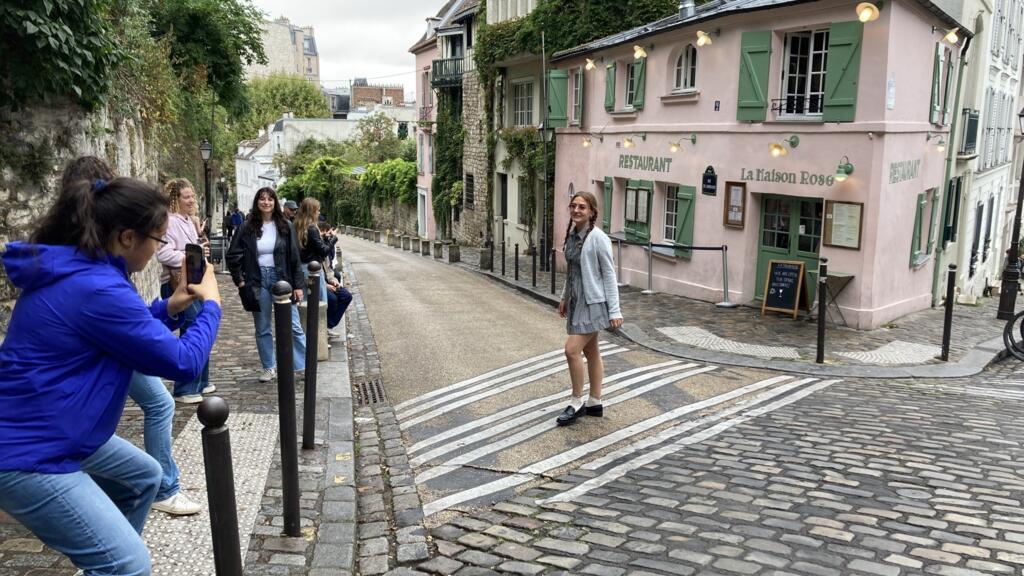
As the neighbourhood of Montmartre groans under the weight of more than 11 million annual visitors, some of its residents are battling to reclaim their cobbled streets from social media-fuelled tourism. But does overtourism need fixing and if so, how?
Ten in the morning on a Tuesday in early September and tourists are already queueing up in front of Le Mur des je t’aime (the Wall of Love) – a 40-square-metre mural tucked behind Abbesses Metro station in Montmartre.
They each strike a pose against the hundreds of enamelled tiles proclaiming "I love you" in 311 languages, phones raised, capturing a slice of Parisian romance for posterity, and probably social media.
The wall, created in 2000 by two French artists, has gained worldwide renown since it featured in an early episode of the cult Netflix series Emily in Paris.
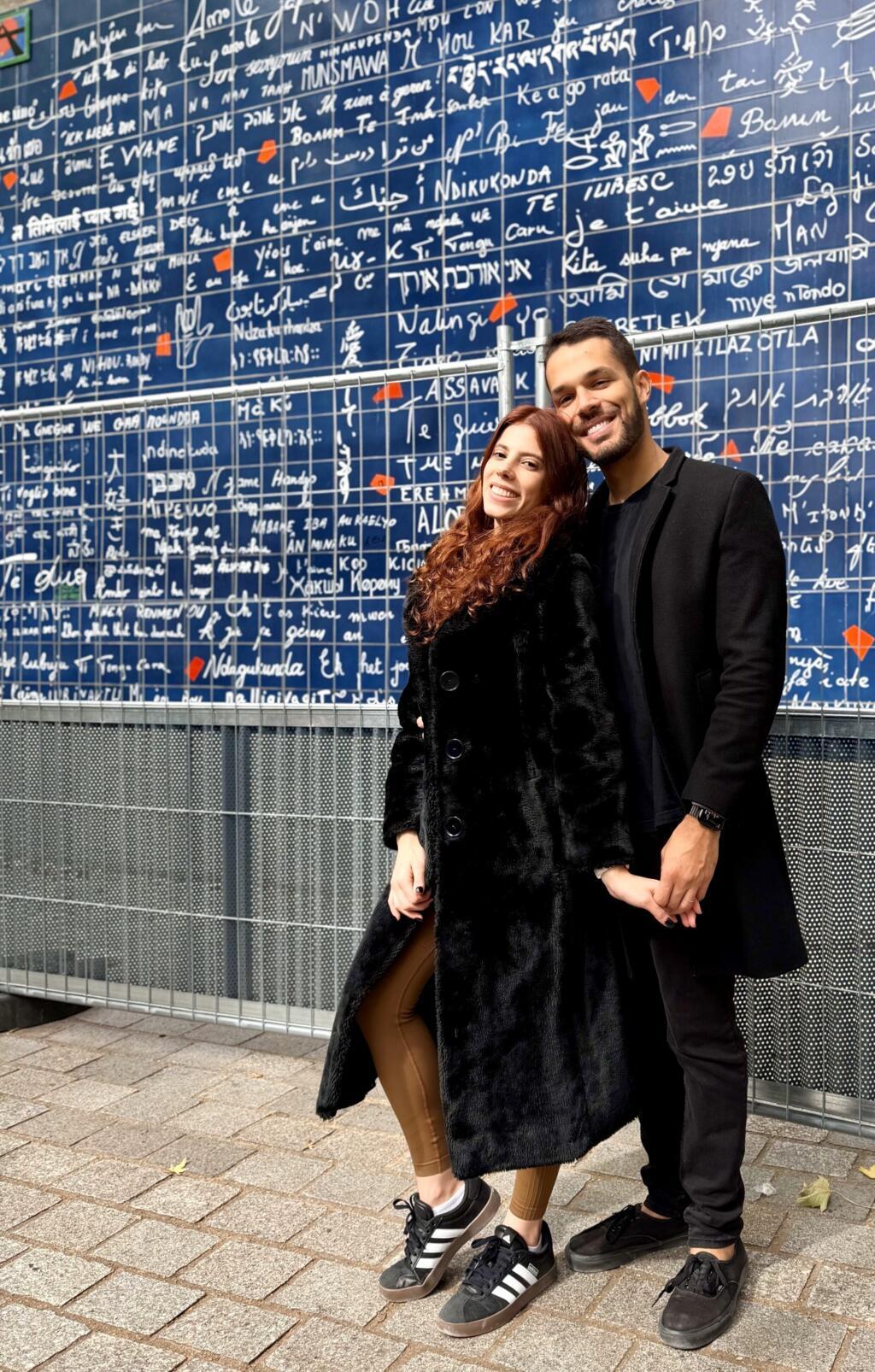
"This is the stupidest thing you can see," rages Béatrice Dunner, a translator who has lived in Montmartre since 1979, pointing to the wall and the crowds that are sometimes "so big they block access to the park altogether".
Up in the hilltop of Butte Montmartre, home to the Sacré-Cœur Basilica, tour guides now make an additional stop at the statue of French-Italian singer Dalida to allow tourists to caress her bosom, in what has to rival for stupidest tourist must-see of the moment.
For Dunner, scenes like this show tourism at its worst.
"Montmartre is just a whole succession of obligatory spots for tourists. You have a vintage photo booth not far from here. There's nothing special about it, but it's on TikTok, so people queue."
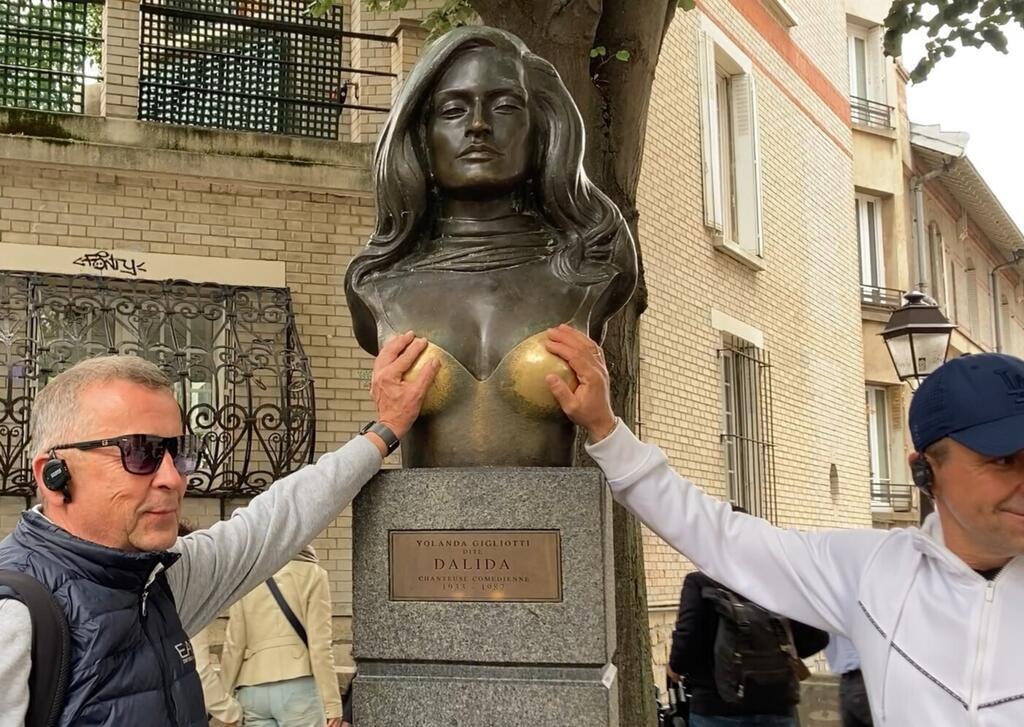
Photogenic Montmartre – with its spectacular hilltop views, cobbled streets, windmills, ivy-clad cafés and erstwhile bohemian Place du Tertre – has become a focal point in the battle against overtourism.
Eleven million visitors flocked to the basilica last year – more than to the Eiffel Tower – while the local population is no more than 30,000 and in the area around the Butte, they're only 12,000 or so.
"It gives you an idea of the shock," says Dunner, who heads the Association for the Defence of Montmartre. "It's getting complicated to live here."
Listen to a report on overtourism in Montmartre in the Spotlight on France podcast:
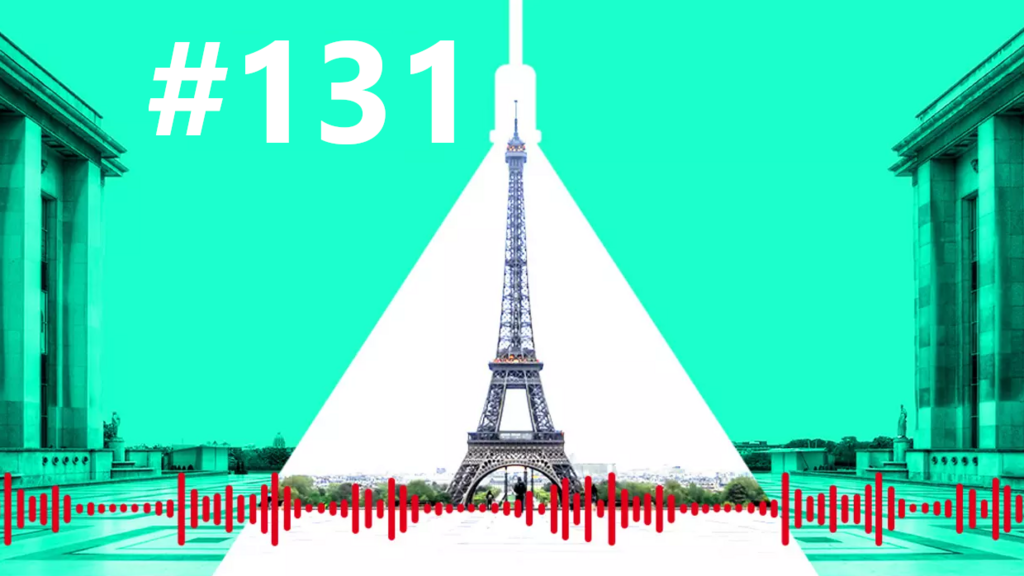
Daily life under the microscope
Dunner describes having to wait for "gaps" in tourist crowds just to exit her building near the funicular railway. Shopping has turned into a laborious piece of theatre with tourists "busy buying and busy taking pictures of what they're buying".
Food tours, where guides explain to tourists how and what the French eat, are "very unpleasant", she says. "You feel like a chimp in the zoo."
Could Mona Lisa move into a private suite at Le Louvre?
"I think it's fair to talk of overtourism in Montmartre," says geographer Rémy Knafou, author of a book on the subject.
The top of Montmartre has always been a magnet for tourists. But the combined effect of the 2001 film Amélie, the surge in tourism worldwide after Covid travel restrictions were lifted, the success of the series Emily in Paris, and the 2024 Paris Games which brought the road bike race to Montmartre, have drawn tourists further down the hill, into the area of Abbesses and Rue Lepic. Knafou calls that a "noticeable change".
In July, the Tour de France made a detour via Montmartre, drawing in not only thousands of extra spectators, but bringing those famed cobbled streets to millions of new eyes.

The Instagram effect
Meanwhile social media influencers continue to turn previously quiet corners into must-see destinations.
"Montmartre is a victim of the Instagram effect," local deputy-mayor Jean-Philippe Daviaud told RFI's Brazilian service.
There's not much anyone can do about it.
Macy, an American influencer from Boston, is one of many young women striking a pose in front of the early-20th-century La Maison Rose café – a haunt for writers and artists like Picasso, Camus and Utrillo, and more recently Emily.
"I saw this on Instagram, I know it's an important landmark in Paris," she says, checking it on her phone. "I'm taking my followers with me around Montmartre, trying to identify hidden gems."
I put it to her they won’t be hidden for long. "If it’s done well, it should be OK," she says, smiling, before hurrying off to her next discovery.
France mulls charging tourists to enter Notre-Dame cathedral
Some visitors are well aware of the potential discomfort for local residents. American couple Bre Figone and Dorian Nguyen, fresh from a vintage Citroën tour they discovered on TikTok, say they're "trying to be as attentive as possible".
"This is a neighbourhood where people live, work, and die," says Nguyen, a home health worker. "It's easy to buy an Eiffel Tower made in China, but if we see locally made art we'll try and buy French-made stuff instead."
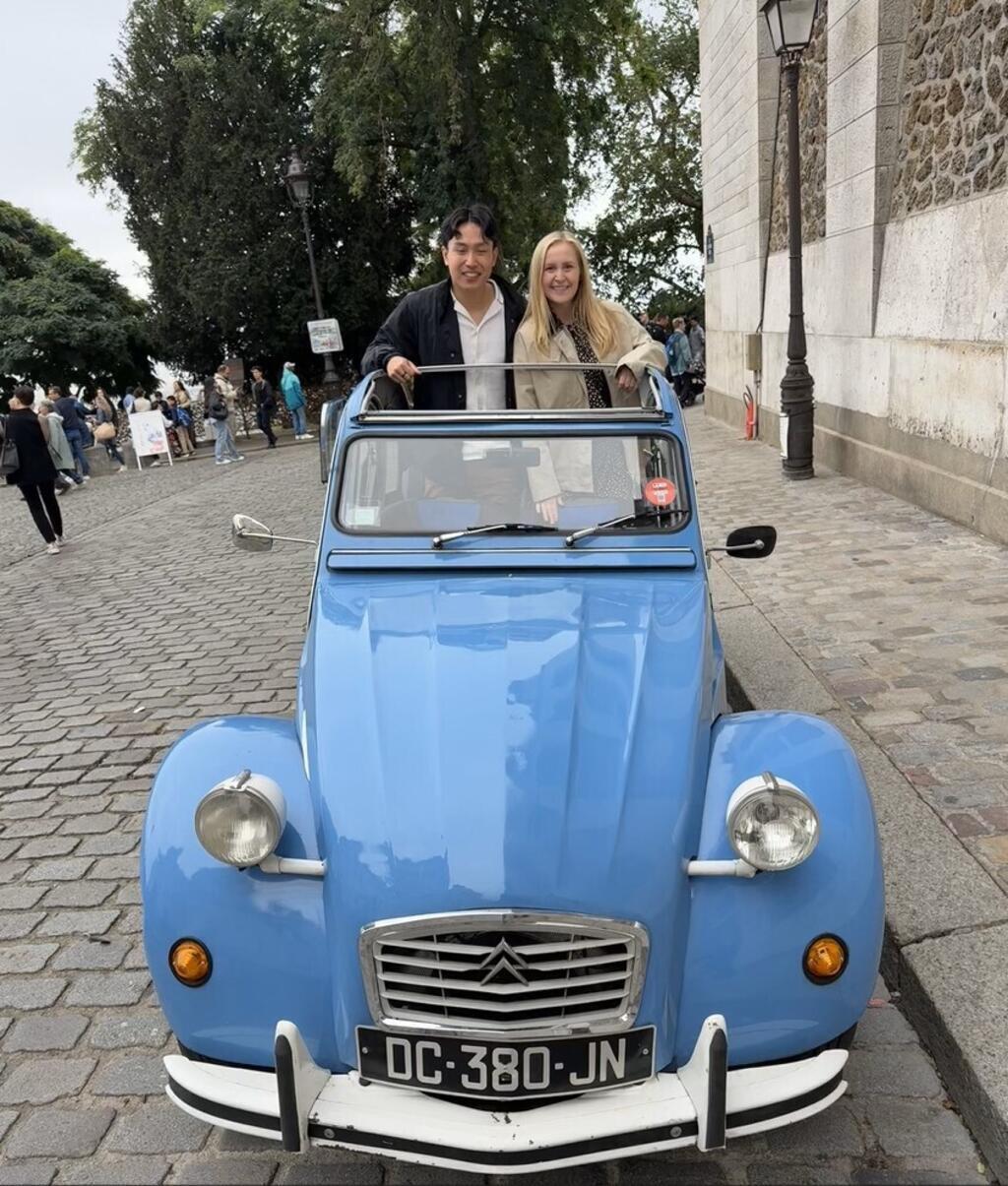
French court blocks Nice’s ban on cruise ships to fight pollution, overtourism
Adapt or close
While the influx of tourists is a boost to the local economy, it’s also changing its nature, as butchers and grocers give way to more tourist-friendly creperies, cafés, takeaway joints and souvenir stands.
"There’s only one fish shop, two butchers," says Dunner. "Most shops are luxury shops, chocolate sellers, ice cream sellers, souvenirs. There aren’t many shops that locals use."
Some international brands have set up shop in the neighbourhood – not necessarily to sell things, but to have a shop window with the Montmartre Paris logo, says Stéphane Cachelin, a local restaurant owner and vice-president of the Abbesses-Lepic shopkeepers' association.
"These big luxury brands sell mainly on the internet but at least they'll have an address in Montmartre that glorifies them a bit."
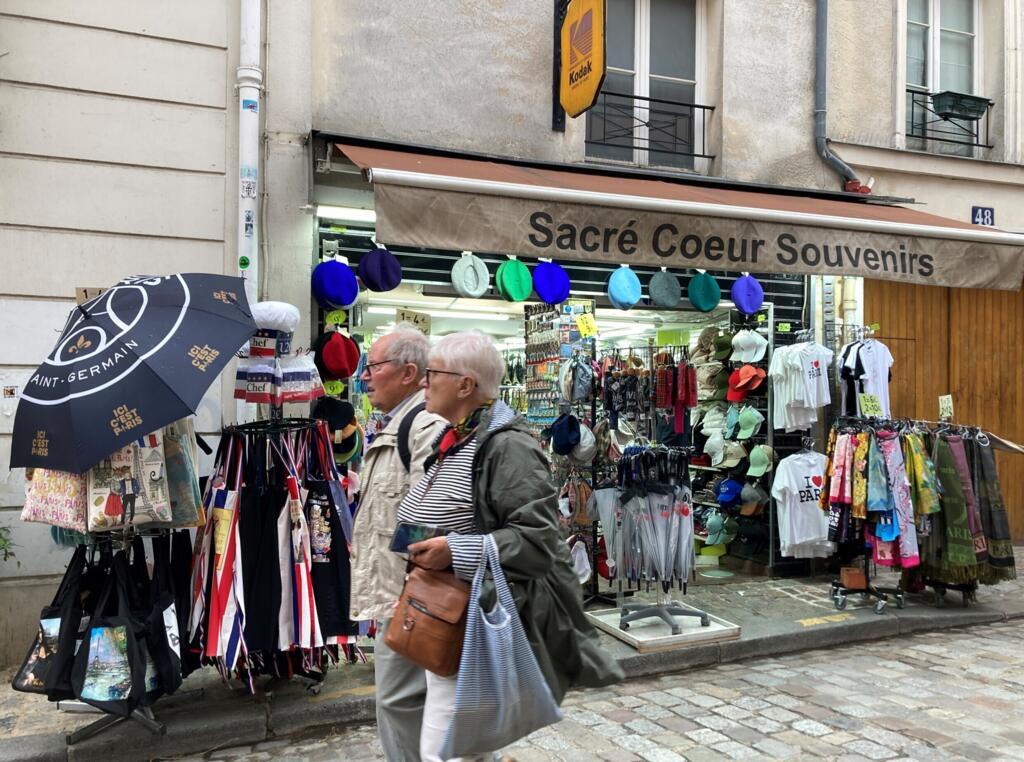
In contrast, tourism in Montmartre has become more "low cost", he says. "Before Covid we also had business tourism, but we've lost that because Montmartre has become a bit too much of a mass tourist destination.
"Now, tourists don't stay long or spend much, they just come to see what Montmartre is all about."
However, Cachelin insists local retailers are adapting to the changing market. "We used to have a pork butcher and now he makes takeaway crepes. Frankly shopkeepers are not unhappy, especially those who want to give up or retire and are selling their businesses to chains. I often walk round the neighbourhood and don't see many vacant shopfronts."
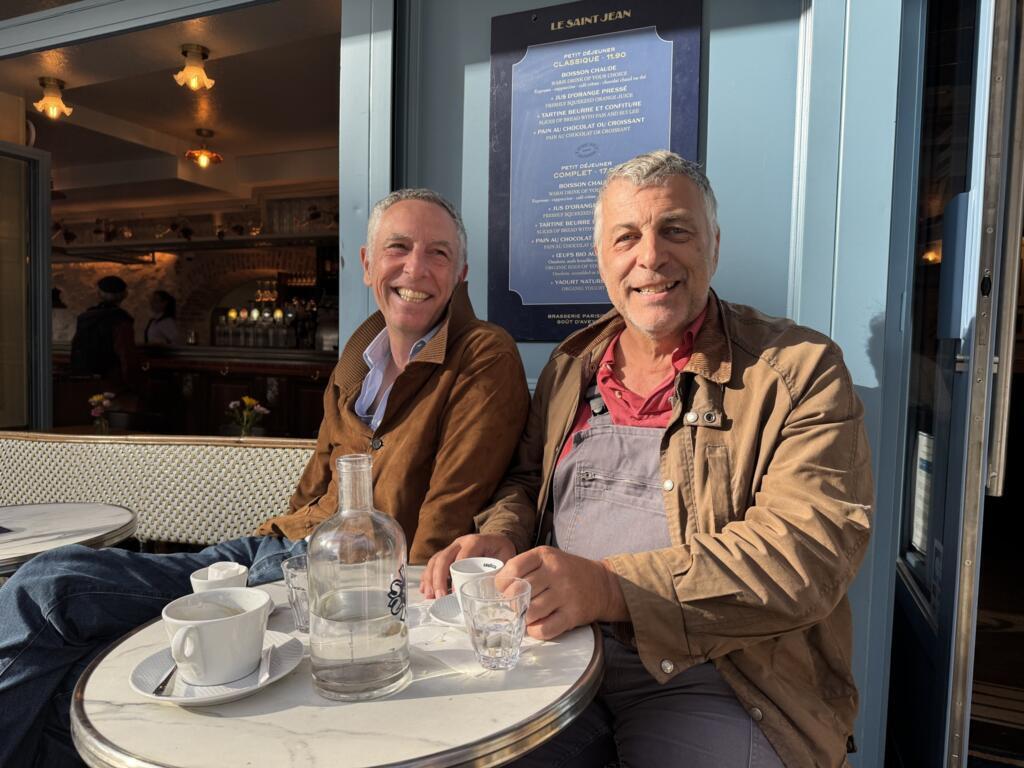
Louvre plagued by leaks and crumbling infrastructure, museum boss warns
Priced out of the market
Property prices in the area near Sacré-Coeur are now some of the highest in the capital – "between 12,000 to 15,000 euros a square metre", says local estate agent Brice Moyse.
Unhappy residents say several school classes have been forced to close as families, in need of larger flats, can no longer afford to stay and new families are priced out.
"Montmartre has always been overrun with tourists," says Moyse, who’s worked in the neighbourhood for 35 years and also serves as president of the local shopkeepers' association. "When people bought in Montmartre, they knew exactly where they were buying."
He dismisses the claim that mass tourism is responsible for inflating property prices, but admits it has changed the market as owners eye bigger returns through short-term tourist rentals and Airbnb.
"Airbnb kills neighbourhoods," Moyse says. "We've lost a huge number of long-term rental properties to Airbnb – perhaps 20 percent of flats in the area have been removed from the market."
While Paris city hall has capped the maximum number of nights Airbnbs can be let at 90 per year, Moyse says there "aren’t sufficient controls".
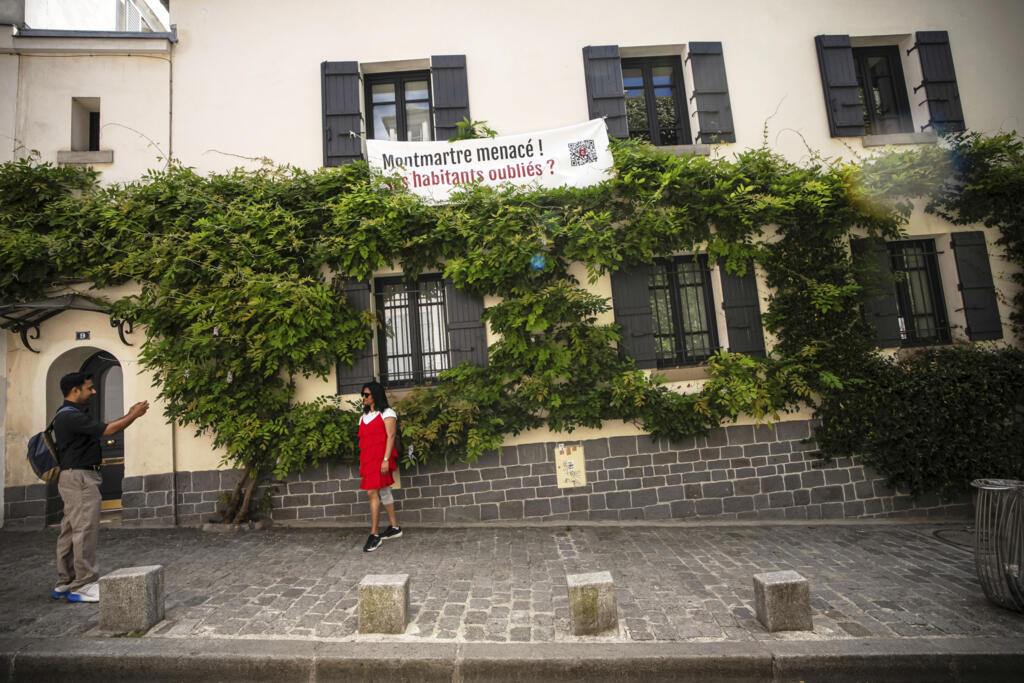
As rents rise in Marseille, anti-Airbnb activists take matters into own hands
Pressuring politicians
The issue of overtourism in Montmartre has now become political, with some residents hanging banners from apartment buildings with slogans such as "Forgotten residents!" and "Let the Montmartrois live!"
Dunner's association is drafting a white paper to present to candidates in the city’s municipal elections next March, "to convince decision-makers to make things less easy for tourists".
Proposals include higher tourist taxes, pre-empting commercial leases to stop them being turned into even more souvenir shops, restricting tour group sizes, and reclaiming public pavements that have been overtaken by café tables – "the privatisation of public space", as Dunner puts it.
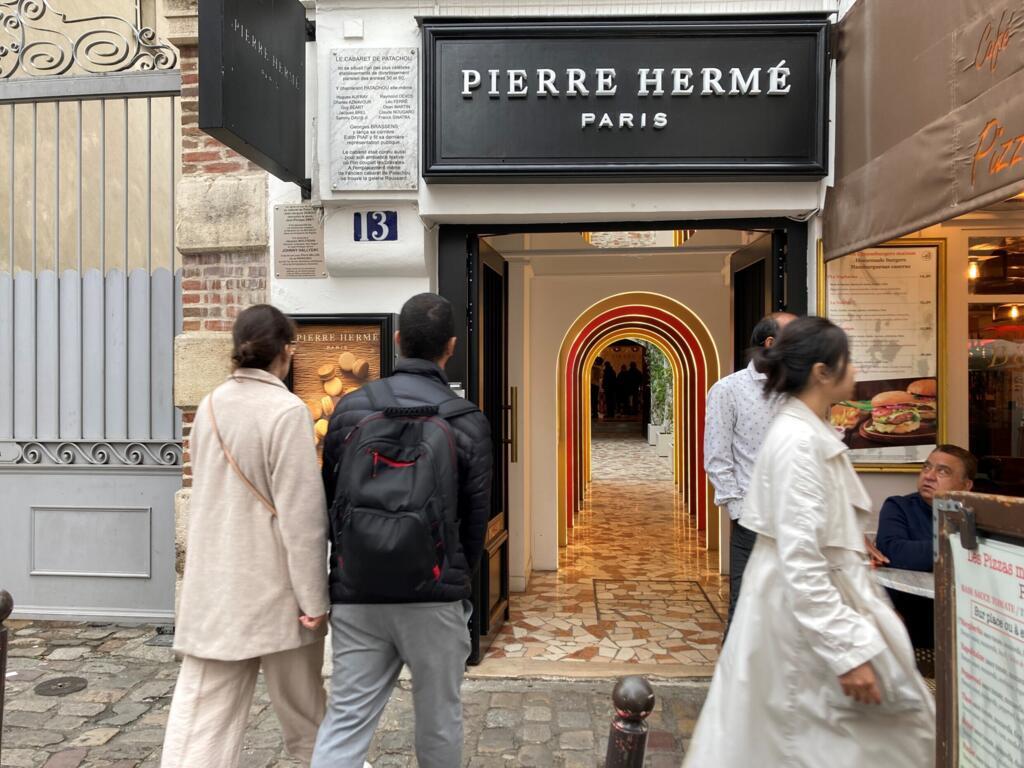
They’re taking inspiration from cities like Amsterdam, which has forbidden the building of new hotels unless one is closed down, reduced incoming flights, and enforced strict regulations on all short-term tourist rentals.
For geographer Knafou, Montmartre illustrates what can happen "when authorities fail to anticipate the impact of mass tourism".
In 2021, Montmartre was selected as part of the Embellir votre quartier (“Beautify your neighbourhood”) project, which has culminated in the recent pedestrianisation of a number of streets in La Butte. Aimed at improving quality of life and reducing noise and air pollution, it's met with stiff opposition from residents' associations like the Defence of Montmartre.
"Urban beautification policies, such as pedestrianisation, are driven by very good intentions, but by making a city more beautiful they also make it more attractive to tourists," Knafou says. "Removing parking spaces on the Butte is seen by locals as a punishment," he notes, particularly by elderly people who are more reliant on cars.
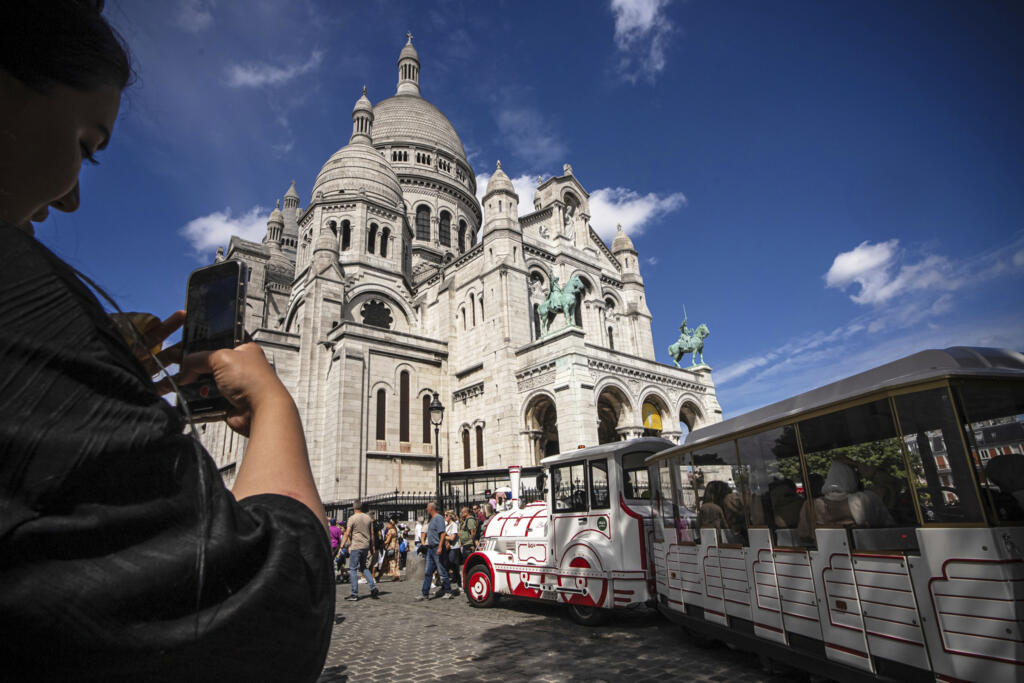
While the city of Amsterdam acted in time and has had some success in regulating mass tourism, Knafou says Montmartre faces unique challenges as a district within a major city rather than a standalone destination.
He advocates more modest steps such as better noise control, limits on the use of tour guides with microphones, and involving residents more in decision-making.
'Unbridled capitalism'
Local authorities acknowledge the challenges.
"Paris's position is clear: we're against Airbnb," deputy-mayor Daviaud said, citing the reduction in annual rental limits from 120 to 90 nights, and equivalent taxes for both short- and long-term rentals.
The municipality has also banned or restricted film shoots in the pedestrianised Butte district.
But he views current visitor numbers as a return to normal rather than a crisis. "Today we're not seeing an explosion of tourism, but rather a return to pre-lockdown levels."
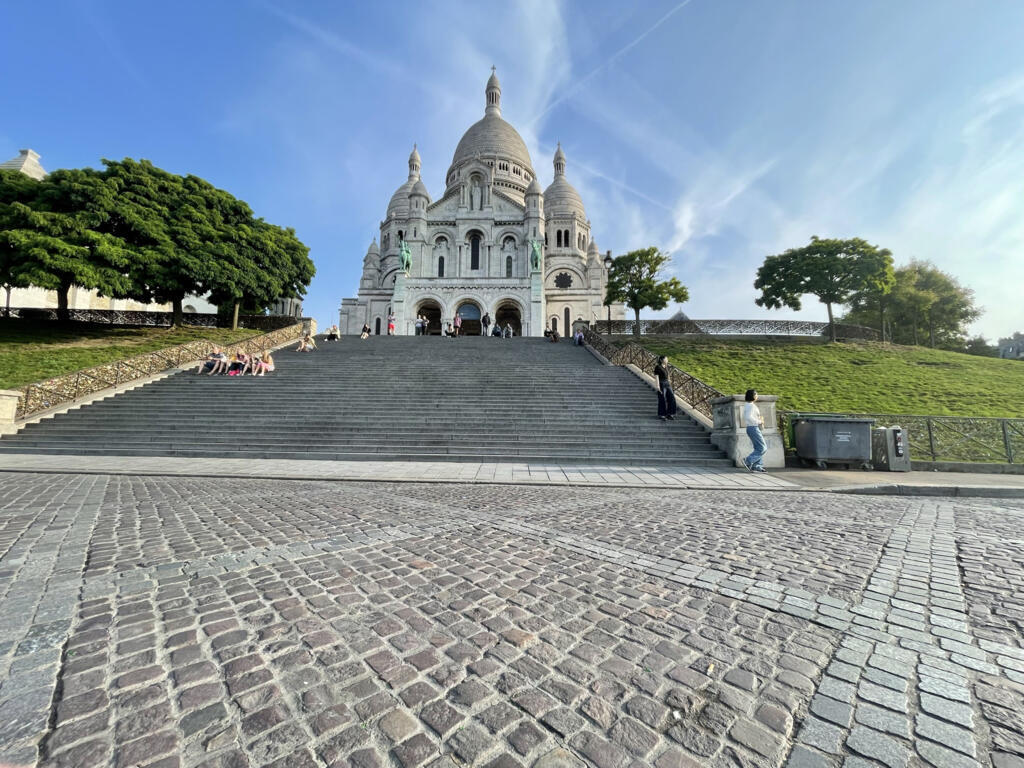
Ultimately, the battle reflects the tourism industry's huge economic clout. France welcomed over 100 million international visitors last year, generating around €70 billion – with nearly half coming to Paris.
"Tourism nowadays is the human activity where unbridled capitalism is really ferocious," says Dunner. "It brings in so much money, struggling against it is very difficult."
Restaurant owner Cachelin, however, says "we can't afford to wall ourselves in".
Dunner insists the battle isn't just about her neighbourhood and personal comfort, but part of a bigger discussion on urban life itself.
"Should cities disappear and just be film sets, or should they still exist and be full of life and full of events?" she asks.
"We want to preserve life in Montmartre. At least we're trying."







